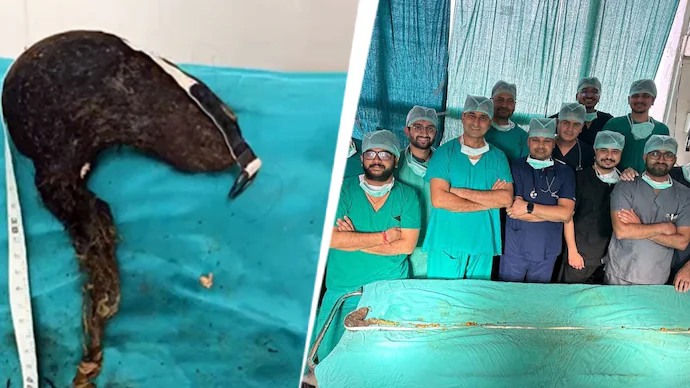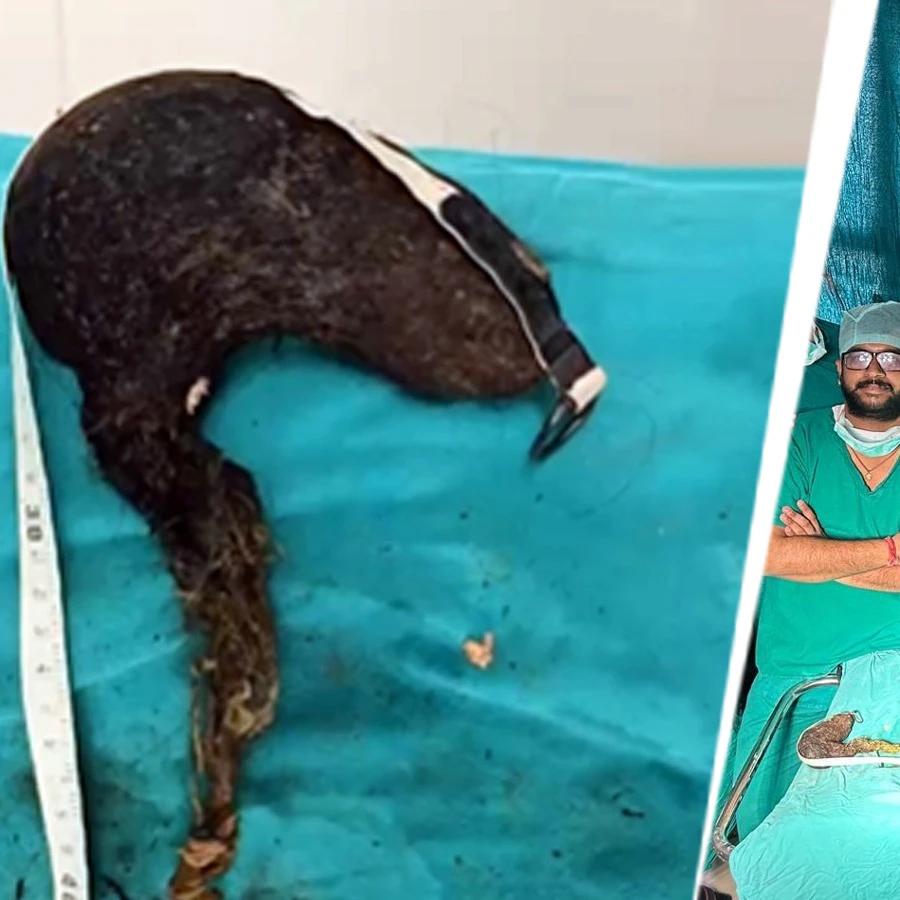
In a groundbreaking medical achievement that has captured national and international attention, doctors at SMS Hospital in Jaipur have set a new world record by successfully removing a 210-centimeter-long trichobezoar, or hairball, from the stomach of a 14-year-old girl, marking a significant milestone in the field of surgical medicine and raising awareness about rare gastrointestinal conditions. The patient, a young student from Agra, had been suffering from persistent abdominal pain, vomiting, and a noticeable swelling in her stomach for over a month, symptoms that puzzled her family until she was brought to the hospital for further evaluation. Upon examination, doctors discovered a hard, elongated mass occupying much of her abdomen, and advanced imaging revealed the presence of an unusually large object stretching from her stomach into her intestines. The medical team quickly diagnosed her with Rapunzel Syndrome, a rare disorder named after the fairy tale character, in which individuals compulsively ingest hair—a condition often linked to psychological factors such as Pica, where people eat non-food items. This particular case was complicated by the fact that the hairball, or trichobezoar, had not only filled the girl’s stomach but had also extended deep into her small intestine, making the surgical procedure both challenging and risky. Led by Dr. Jeevan Kankaria, the surgical team meticulously planned and executed the operation, managing to remove the entire 210-centimeter-long hairball in one piece, a feat never before documented in medical literature. The surgery, which lasted approximately two hours, required exceptional precision to avoid damaging the delicate tissues of the gastrointestinal tract, and the team was able to complete the procedure without the need for a blood transfusion or any major complications. Upon examination, the trichobezoar was found to contain not just hair, but also various non-food items such as rubber bands, threads, and even small stones, highlighting the complexity of the patient’s underlying psychological condition. The girl’s speedy recovery following the operation is a testament to the skill and dedication of the Jaipur medical team, and her case has been submitted to the Guinness World Records for recognition, as the previous record for the longest trichobezoar removed stood at 180 centimeters. This extraordinary case underscores the importance of early medical intervention, mental health awareness, and multidisciplinary teamwork in addressing rare and life-threatening conditions. It also serves as a reminder for parents, teachers, and healthcare professionals to be vigilant about unusual eating behaviors in children and adolescents, as timely diagnosis and treatment can prevent severe complications and save lives. The Jaipur surgery has not only set a new benchmark in the medical community but has also inspired hope for families dealing with similar rare disorders, showcasing the remarkable advances being made in Indian healthcare. As the young patient prepares to return home, her story stands as a powerful example of how modern medicine, combined with compassion and expertise, can overcome even the most extraordinary challenges, and it encourages ongoing dialogue about the intersection of physical and mental health in the well-being of young people.






